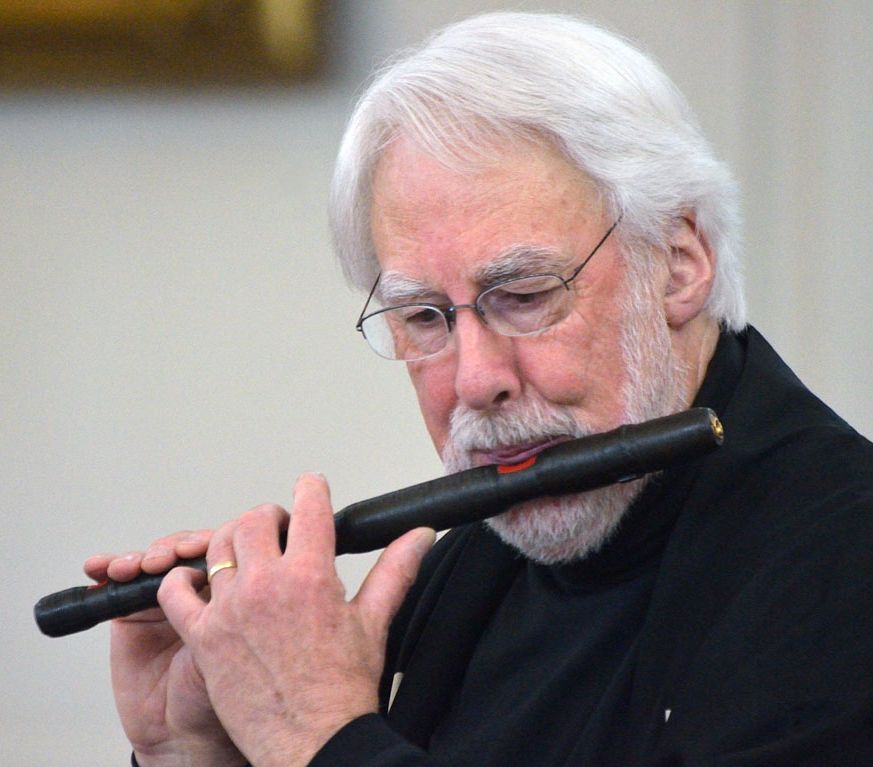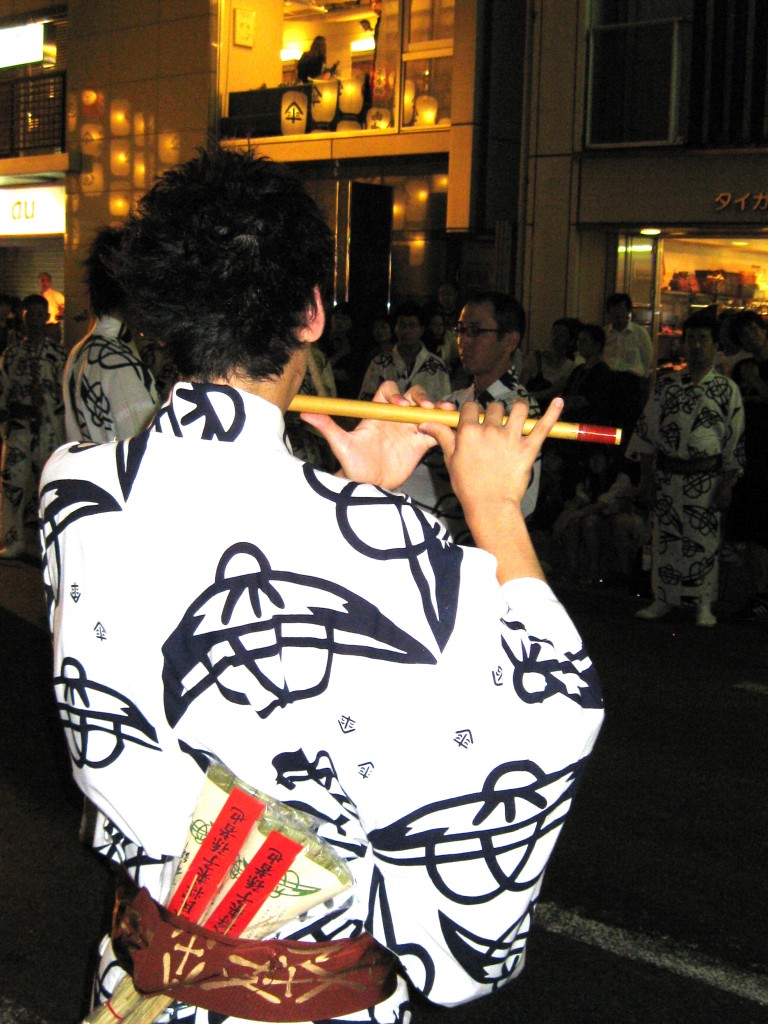Fue and Shinto by Graham Ranft

Australian Graham Ranft seeking harmony with self and nature through the fue (photo by Peter Hislop, Canberra 2013)
In this current digital/digitised age I wonder if the appeal of Shinto for Westerners is about a more natural spirituality and also as a way of reconnecting with that world we lose as we ‘grow up’ and dimly perceive a sense of loss as we get older.
I would suspect that many westerners who are surrounded by the tumultuous avalanche of ‘noise pollution’ – both visual and actual sound, and maybe being more sensitive to this – are looking for some escape or at very least ‘getting back to basics’. In a kind of paradoxical way ‘tuning out’.
I use the word pollution quite deliberately as this has a Shinto meaning as I understand it that is separate from a ‘western’ meaning.
How does this relate to playing the Nōhkan fue [flute]?
The Nōhkan fue is a 7-holed transverse flute with equally sized and spaced finger holes with a deliberate bore narrowing/constriction between the utaguchi– blowing hole – and the nearest finger hole. It neither plays in tune or overblows like a normal flute.
In blowing Nōhkan – I am still very much a raw beginner – I am learning to recreate the spare and enigmatic ‘melodies’ of the Nōh play.
I see playing a fue as making sound with nothing more that the breath as a way of connecting or reconnecting with the natural. Of course non–keyed flutes are much more difficult to play well than modern instruments with keys and mechanisms to facilitate both technique and intonation. Each note has to be played with care with attention and deep hearing.
The Nōhkan fue, like the Shakuhachi, is a purpose-built instrument for the music they play.
“Noh-flute is sometimes called “Kami-oroshi no fue” (meaning a flute which calls gods down to the visible human world). It can be said that nōh-flute in Noh performance plays the role of building a bridge between the world of gods and spirits, and invites them to the human world for even a brief period. Noh-flute is also played to let invisible beings come back to their own world”…
– Kumiko Nonaka http://www.fuu-chou-sha.jp/profile_e.html
The Nōh play fue music are comprised of short phrases of melody which are typically played either for introduction of characters or to heighten the emotion of that particular scene. There are of course some entire self-contained pieces e.g. Oshirabe, Koi no Netori, and others.

I am currently working on ‘Kakeri’. At first glance it is just a series of short phrases but in each phrase are nuances of tempo, timing and affect. Through my Nōhkan teacher Mr Hiroto Watanabe sensei of Mejiro Music in Tokyo, I am beginning appreciate the depth of this apparent simplicity. Every lesson he introduces more nuances into each phrase. The sound of the breath, the change in tone and phrasing and rhythm of the notes in each phrase, the space ‘ma’ between the phrases.
These are not pretty melodies as such, although there can be those in the short phrases, but also something more refined. Just sound.
(If one wanted to play just pretty melodies then there are many beautiful folk tunes that are playable on the Shinobue e.g. Sakura Sakura.)
One might also say that this ‘natural’ fue is made of dead wood. In breathing into them we are bringing a new ‘life’ out of them and I see that as consistent with what I understand of Shinto. And certainly in that, a sense of gratitude, to be able to play fue. To play is to breathe and to some extent to be in harmony with the instrument and with oneself.
Every lesson I start with “Oshirabe” which is a piece played at beginning of a Nōh play before the actual performance and it is as much to check ones ‘condition’ as to warm up the bamboo fue. To center and collect oneself.
Rokurobyoe Fujita, master of the Fujita style of Nōhkan said in a DVD – reflecting on his thoughts about blowing Nōhkan: –
“Nohkan does not have do re mi – not because it is old but because it is special. I really want to make sound with my existence – is that a dream or is it not”?
I was very much interested with this idea “I want to make sound with my existence”.
How to achieve that I am yet to find. In many ways playing a fue is about self-discovery…a journey with spiritual overtones and gratitude for this opportunity at this age to learn a little about this old and enigmatic little fue and its music. I will never play fue in a nōh play, but that is not the point. It’s the journey – not the destination.
“Nōhkan becomes the player and the player becomes Nōhkan”..
– Rokurobyoe Fujita.*************************************************************************************************************************************
Graham can be contacted direct at the following address: grahamranft67[at mark]gmail.com
**************************************************************************************************************************************
A musician adds to the atmosphere of the Gion Matsuri in Kyoto


Leave a Reply